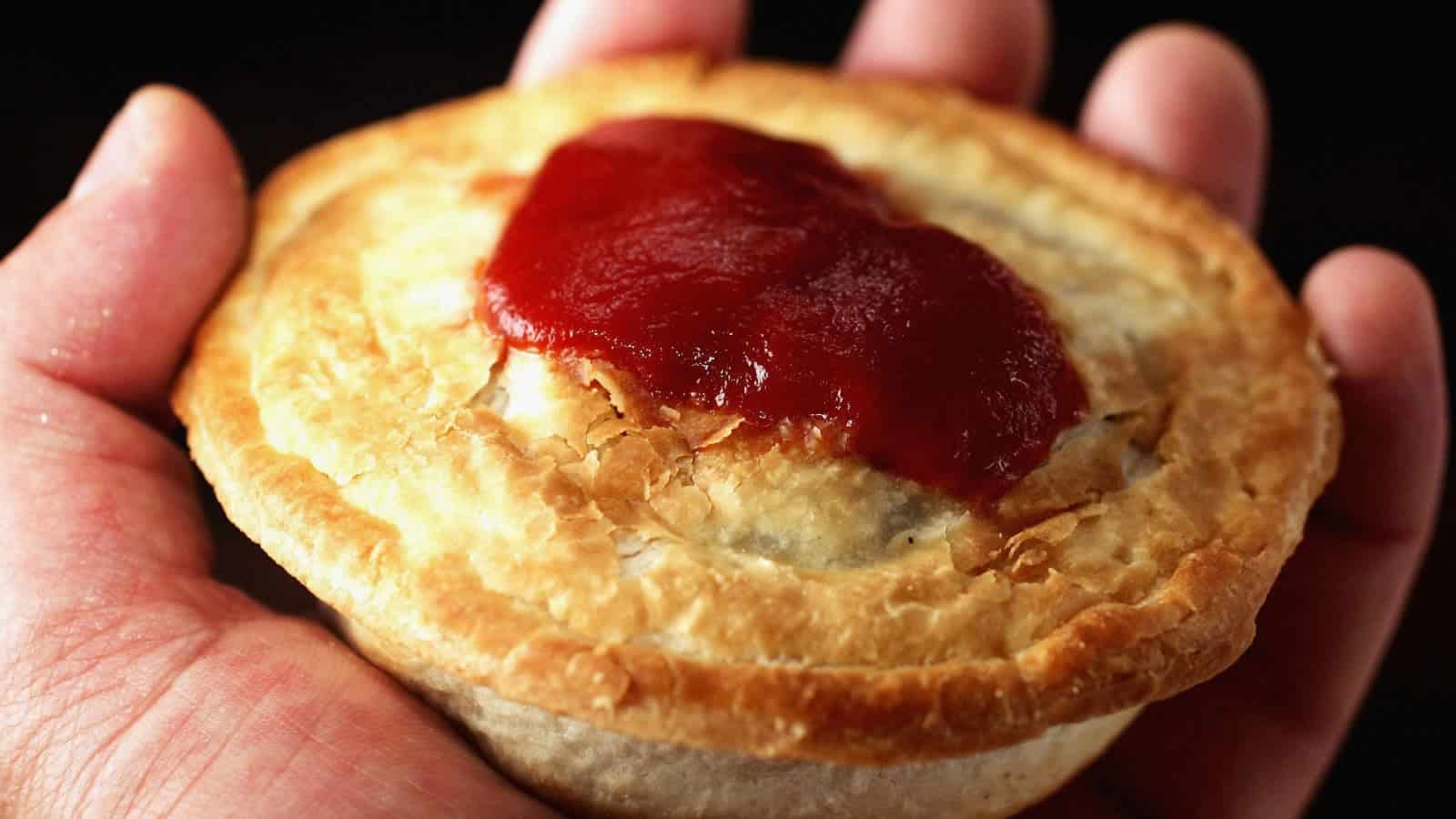The Ultimate Parent’s Guide to Australian Foods: Introducing Your Family to Down Under Delights
G’day Mums and Dads! Are you ready to take your family on a delicious journey through the Land of Oz? From the bustling food markets in Sydney to the tranquil beaches of the Gold Coast, Australia offers a smorgasbord of flavors that your taste buds simply can’t afford to miss. Whether you’re living in Australia, planning a trip, or just looking to bring a touch of Aussie culture to your dinner table, this guide is your companion to explore Australia’s culinary wonders with your little joeys.
Understanding Australian Cuisine
Australian cuisine is as vibrant and diverse as its landscape. Influenced by Indigenous cultures and immigrants from all around the world, the food scene down under is an exciting fusion of flavors, textures, and cooking techniques. Australia is not just about throwing another shrimp on the barbie; it’s about discovering a rich heritage of food that tells a story of its people and places.
So, throw on your apron, mate, and let’s introduce our kids to the true-blue Aussie way of eating!
Iconic Australian Foods to Start With
Vegemite on Toast: Love it or hate it, this iconic spread is a quintessential part of the Aussie breakfast. Packed with B-vitamins, this umami-rich spread makes for a great start to the day. The trick is to spread it thinly over buttered toast – and who knows, your kids might just become Vegemite soldiers marching off to school!
Fairy Bread: For a delightful treat at children’s parties, you can’t go past the classic Fairy Bread. It’s simple – just sprinkle hundreds and thousands (that’s Aussie for sprinkles) on buttered white bread and watch the kiddos’ eyes light up!
Aussie Meat Pie: The humble Aussie meat pie is a staple at footy games and school canteens alike. Encased in flaky pastry is a hearty filling of minced meat and gravy, often topped with tomato sauce (ketchup). It’s the epitome of Australian comfort food for families on the go.
Lamingtons: Let’s not forget a sweet touch! Lamingtons are delightful sponge cakes coated in chocolate and desiccated coconut, often sandwiched with jam or cream. They’re a perfect representation of Australian ingenuity and deliciousness.
Nutrition and Balance in Aussie Meals
While exploring the exciting flavors of Australia, it’s important to keep nutrition in mind. Balance is key, so here’s how you can ensure your family enjoys these Aussie treats while maintaining a healthy diet:
- Fresh Produce: Australia is renowned for its fresh fruits and vegetables, many of which are unique to the continent. Encourage your kids to try fruits like the finger lime or the Kakadu plum for a vitamin-packed snack.
- Seafood: Take advantage of Australia’s vast coastline by introducing your family to the array of seafood on offer. Fish like barramundi and snapper are not only tasty but also rich in omega-3 fatty acids.
- Lean Meats: Australia produces some of the finest beef and lamb. Opt for lean cuts and use them as a chance to teach your children about protein and its importance in their diet.
- Whole Grains: Swap out white bread for whole-grain options when creating your Fairy Bread or toast to increase fiber intake.
Remember, involving your children in the cooking process can pique their interest in trying new foods and foster a love for healthy eating. Cooking time can be bonding time!
So, let’s embark on this flavorsome journey through Australia’s gastronomic landscape together, creating lasting memories and instilling an adventurous palate in our youngsters. Stick around for more tips, recipes, and fun facts as we dive deeper into the tasty world of Australian cuisine. Onward, culinary adventurers!

5 Essential Tips for Parents Preparing Australian Foods
Introducing your family to Australian cuisine can be an exciting adventure. To make the experience enjoyable and stress-free, here are five essential tips for parents preparing Australian foods:
- Start with Familiar Ingredients: Australian cooking often uses ingredients that might already be staples in your pantry. Things like rice, wheat, and oats are common, as are proteins like chicken and beef. Introducing Aussie flavors through familiar ingredients can help make new dishes more appealing to kids.
- Embrace the BBQ Culture: Australians love their barbies (BBQs), and it’s a fun way to get the whole family involved in cooking! You can grill meats like sausages or lamb chops and serve them with easy sides like salads or grilled veggies. It’s a great way to enjoy the outdoors and teach kids about cooking over an open flame.
- Incorporate Food Allergies and Preferences: Before getting too adventurous with new dishes, make sure to consider any food allergies or dietary preferences. Australia has a wide range of food options suitable for vegetarians, vegans, and those who are gluten-free or lactose intolerant.
- Make It Fun and Educational: Turn cooking and tasting new foods into a learning experience. You can teach your children about the origins of the dish, the traditional ways it is prepared, and its significance in Australian culture. Utilizing colorful maps or stories can captivate their interest and make mealtime both fun and educational.
- Get Creative with Presentation: Children are often enticed by the way food is presented. Give the Aussie dishes a fun twist, like shaping meat pies like kangaroos or serving smoothies with Australian fruits in colorful cups. Attractive presentation can make trying new foods more exciting for children.
Preparing Australian foods with your children should be an enjoyable and gratifying process that exposes them to a new culture through its flavors and customs. By following these tips, you can make the culinary exploration of Australia a delightful venture for your family.
More Down Under Delicacies to Explore
Australian cuisine has so much more to offer. Let’s look at other popular dishes that are a hit with families:
- Grilled Kangaroo: Lean and rich in flavor, kangaroo is a game meat that can be a unique addition to your family’s menu. Make sure to cook it medium-rare to keep it tender, and serve it with a side of mashed sweet potatoes or a garden salad.
- Pavlova: Named after the Russian ballerina Anna Pavlova, this is a meringue-based dessert with a crisp crust and soft, light inside, usually topped with whipped cream and fresh fruits. It’s a delightful treat ideal for special occasions.
- Chicken Parmigiana: Although not unique to Australia, this dish has been wholly adopted into pub culture. Juicy chicken schnitzels topped with tomato sauce and melted cheese can quickly become a family favorite at home too.
- Damper: This traditional Australian soda bread is historically prepared by swagmen and drovers over campfires. It’s simple to make and a great way to engage children in preparing bread from scratch.
- ANZAC Biscuits: These sweet biscuits, made from rolled oats and golden syrup, hold historical importance. They were originally made to send to the ANZACs (Australian and New Zealand Army Corps) during World War I. Baking these with your kids can be both a history lesson and a culinary delight.
Each of these dishes provides a taste of Australia’s unique flair and with them, a story to share. Your family’s exploration of Australian cuisine can lead to a newfound appreciation for the country’s culture and history – all through the universal language of delicious food!
And there you have it, folks – a little taste of Australia that you can share with your kiddos right in the comfort of your own home. No need for passports or plane tickets – just an eagerness to cook, taste, and enjoy. So, grab your apron and get ready to add some Aussie sizzle to your meals. Bonza!
For more great fun click here. For more information see here
Disclaimer
The articles available via our website provide general information only and we strongly urge readers to exercise caution and conduct their own thorough research and fact-checking. The information presented should not be taken as absolute truth, and, to the maximum extent permitted by law, we will not be held liable for any inaccuracies or errors in the content. It is essential for individuals to independently verify and validate the information before making any decisions or taking any actions based on the articles.




